Everything green
20/12/2022 - 10:38
COP 27 (UN's recent Climate Change Conference in Egypt) was a good time to talk about ecological restoration, afforestation and reforestation. We did so with Luis Gonzalo Moscoso Higuita, Manager and Legal Representative of the company FORESTPA S.A.S, in Colombia.
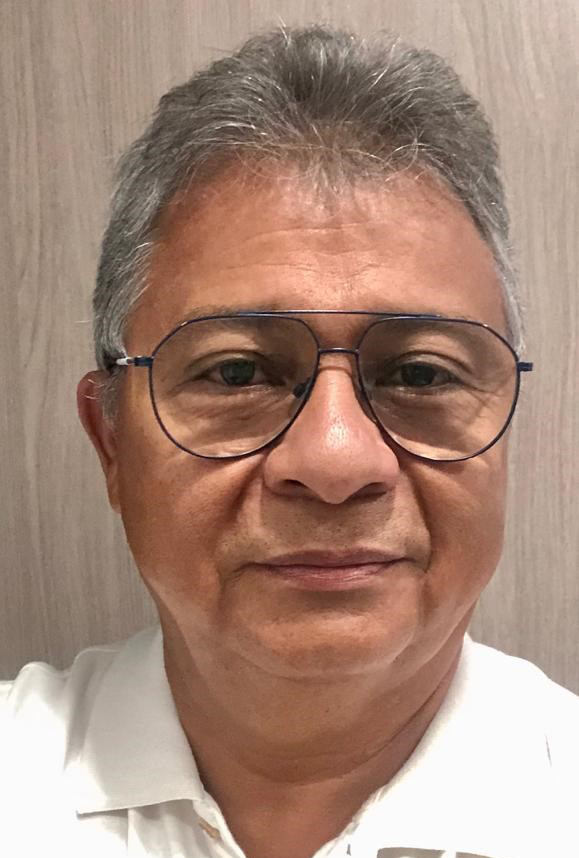 |
He was the architect of the first project in South America to trade carbon credits generated by the establishment of forest plantations with native species in the voluntary market. He has also done pioneering work in the lowlands of Cauca Antioqueño, Colombia, leading a successful and cost-effective forest restoration process in soils highly degraded by alluvial gold mining in the tropics. Tree planting is often promoted as one of the most effective tools for promoting and conserving biodiversity and combating the climate crisis as trees sequester, store carbon and release oxygen. But not any old way. If the project is not well planned it can actually increase emissions and damage ecosystems. |
|---|
Luis, there are many species of trees and plants in your revegetation projects.
Yes, you have to plant a lot of species to get a forest as similar to the one that disappeared. When I was developing our forest concept I thought it was obvious, but I see that where I am going knowledge about creating the right context for growing a forest is limited. That is why in my last publication entitled "Natural… feeling" I wrote twelve criteria on how to plant a forest.
Growing a forest requires responsibility, knowledge, practical experience and consideration of what needs to be involved depending on the region and more so in a country like ours where every metre is different, totally different. We manage to make it so precise because not only do we restore the flora but also the fauna, by involving species that are palatable to insects and even mammals. This megafauna occurs because there are peccaries and two or three other species, which they need in order to survive. There are also other minor species and a large number of birds and bats, thanks to this established forest, which today contains more than 200 native species. In short, we managed to restore the whole chain and this would not be possible without having established all this biodiversity of plant species.
It is worth noting that at the beginning of these projects, the baseline is a rubbish dump, abandoned mine lands, abandoned pastures due to overgrazing and land degraded by agriculture due to inappropriate practices.
When do you consider an environmental project to be successful and what is the key to achieving it?
The project is successful when there is environmental and social responsibility. It also involves cultural, economic and political aspects. It’s about integrated management, able to reach an ecosystem similar to the one intervened or better. We put a lot of emphasis on this. We have already succeeded in convincing a number of entrepreneurs that projects have to be done by looking at all angles and that it is not an expense, but an investment.
"For me it is successful when balance, harmony and sustainability is established with nature. When we forget or ignore nature, we destroy wealth to generate poverty".
How did you come to do these environmental projects?
I was born in the jungle and I witnessed the destruction of the forests where I grew up. I thought that the jungle was going to last a lifetime but I saw it end in less than a generation. So that's where I posed my life hypothesis, where I came to two conclusions. First, I realised that these resources were not sustainable. I never imagined that even a river could disappear in less than twenty years. And secondly, that no one knew how to manage the heritage we had, guaranteeing sustainability.
We have managed to restore degraded landscapes that uncover the bedrock, such as the Cuturú project on the banks of the Nechi River in the north of Antioquia, or planting on concrete, like the vertical gardens and the terraces of buildings.
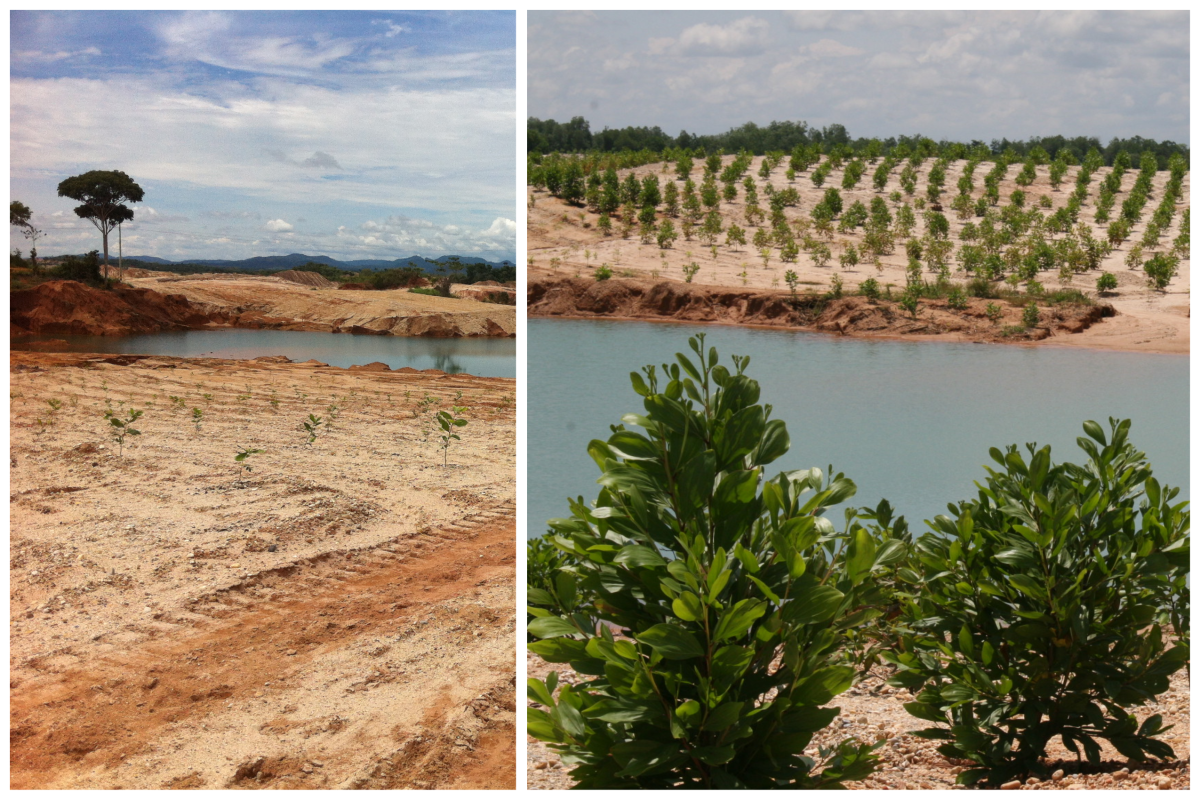
| Left photo: Restoration of the former Cuturú open-pit gold mine, shortly after planting. Right photo: The same site 4 months after planting. After 3 years, native species are planted such as carob, saman, elephant ear tree and ash, using the foreign species as nurse trees. |
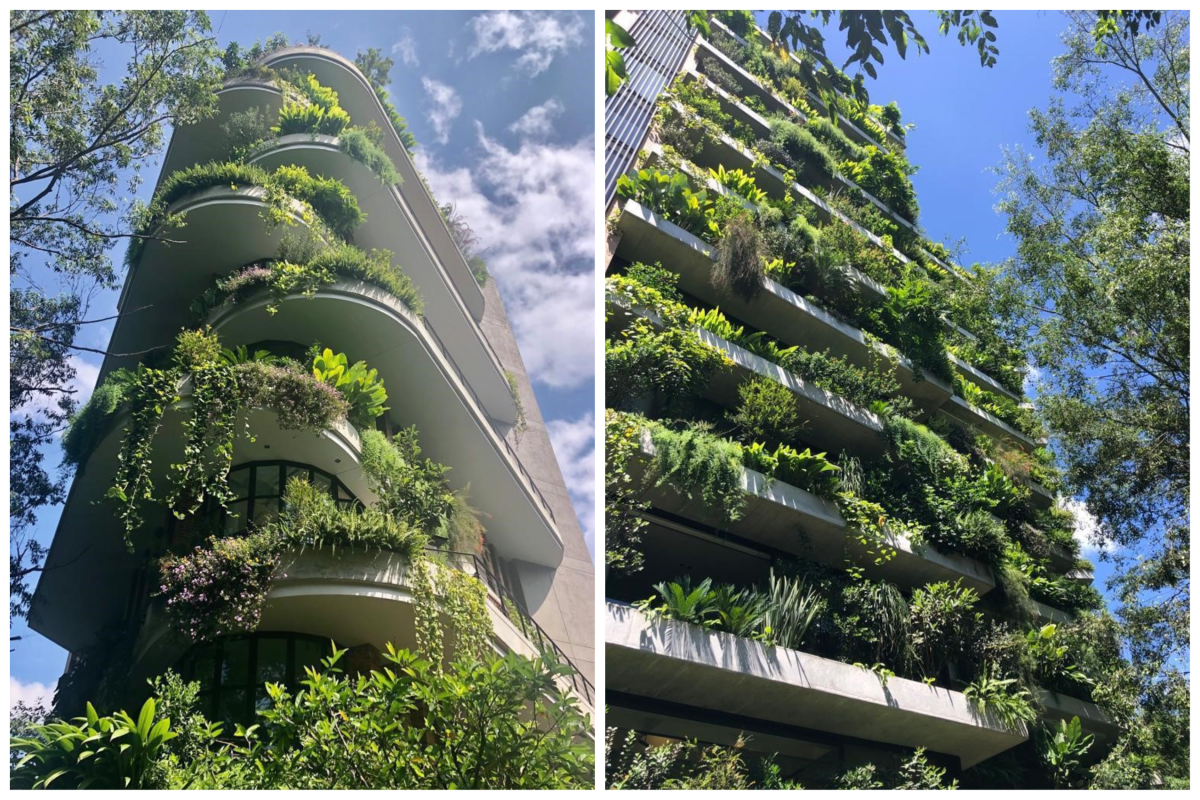
| Vertical gardens in Medellín |
Nowadays there is a whole range of tools to re-establish forests successfully and we use them: fertilisers, soil conditioners, amendments, and even biological components that allow us to provide that balance.
"For each tree we plant - and in less than a year we have trees up to five metres high - we are using 30 grams of TerraCottem and in landscaping we use up to 50 grams distributed in the following way: applying 25 grams at the bottom of the plant hole and then filling it halfway with substrate and adding the other 25 grams and proceeding to the final sealing of the plant hole".
We also add the biosubstrate made by Forestpa.
How did you get to know TerraCottem?
My adoptive father Helmut Luecker, the first to import TerraCottem in Colombia, showed it to me. I saw the work that Professor Van Cotthem and his team were doing in the Sahara and became very interested in it. I did a lot of trials of my own and concluded that it was a product that had what I wanted: macronutrients, microelements, very good addition of volcanic rock, growth precursors and, on top of that, the hydroabsorbent polymers in a high percentage. In TerraCottem I found the product that has it all in one.
How many years have we known each other already?
More than fifteen years I think.
How does TerraCottem help you in your work?
It helps me to guarantee the survival of the plants and achieve good plant growth and, consequently the economic and quality improvement of all the species we plant. I use 30 to 50 grams per tree, and when I move adult and centenary trees I use up to one kilogram.
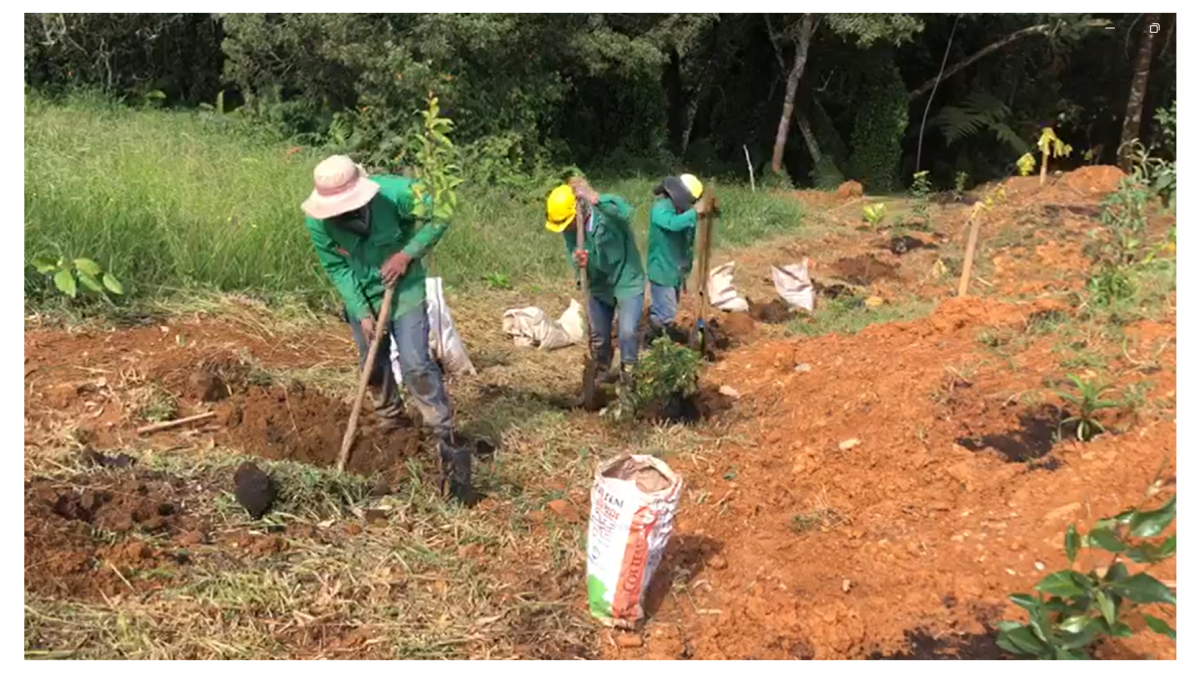
How does your work stand out from the competition?
Forestpa is passion, innovation and art. We have a totally distinct range of business as we handle thirty different disciplines, some of which have been listed earlier. There is deep knowledge and dedication. We study every day and apply what we learn in the field. We have also sponsored many degree dissertations and we do research. That makes it more challenging for the competition to follow us.
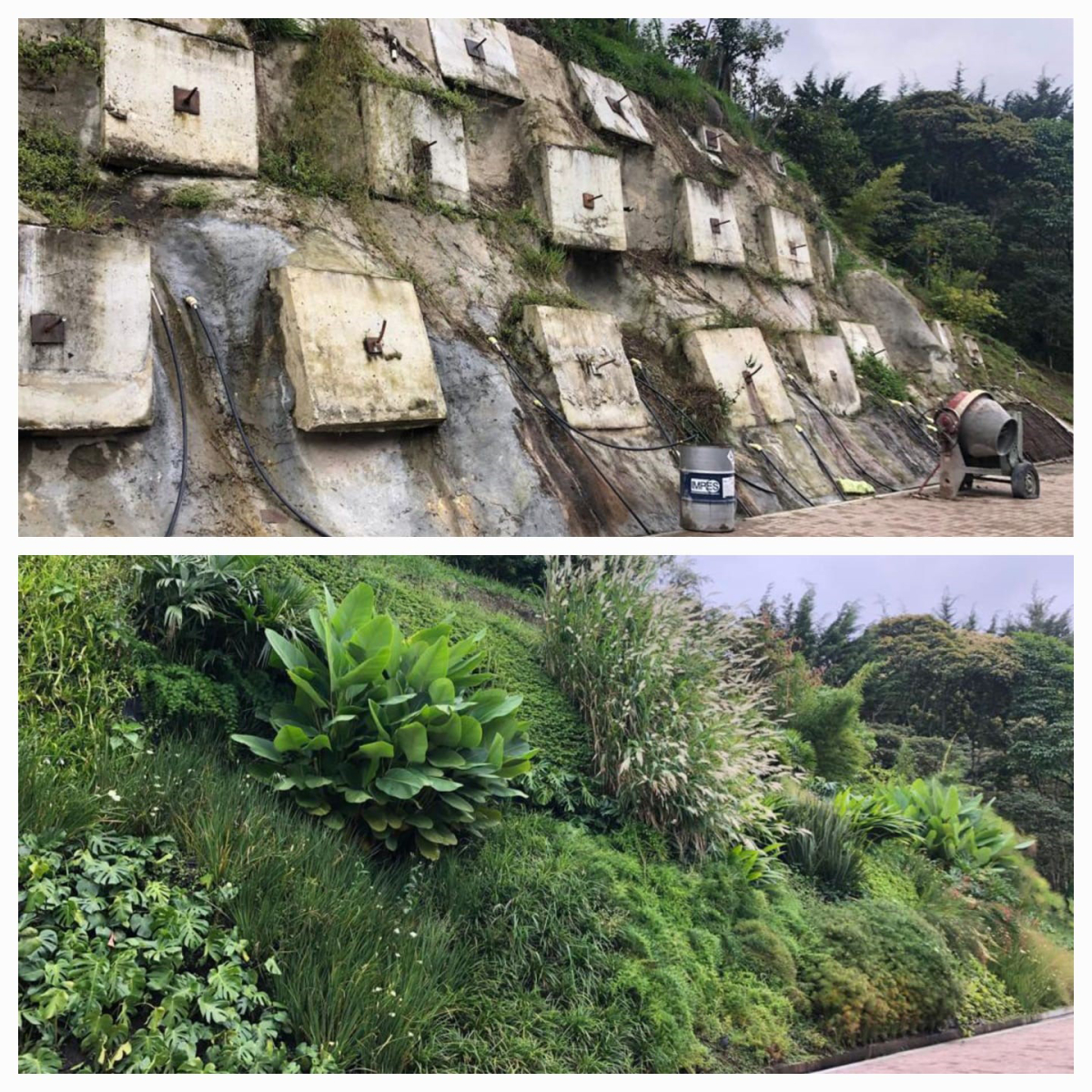
| Revegetation of a concrete slope |
Any particular project you would like to tell us about?
Right now we are working on the Essenza rural reserve in Rionegro in Antioquia. It is a 66-hectare plot of land with 136 residential lots.
There we are doing afforestation, which means creating forest where it no longer exists because it was destroyed. There is also ecological restoration with species ranging from grasses, shrubs, palm trees and trees. The landscape improvement at Essenza includes more than twenty revegetation systems, which is how we cover all the slopes that were left uncovered by the cutting and levelling. We are using more than fifty species, including large and small herbaceous plants, shrubs, trees and palm trees.
The project is going to need around half a million seedlings of the aforementioned plants and trees plus all the revegetation which exceeds sixty thousand square metres. At the moment we are working on thirty thousand square metres with hydroseeding, revegetation with stolons, grasses and matting. This represents a total of forty thousand seedlings planted. The site is still a work in progress but it has already changed a lot.
To cover the needs of this project, we set up an on-site nursery with roughly 120,000 plants. TerraCottem is involved in every planting.
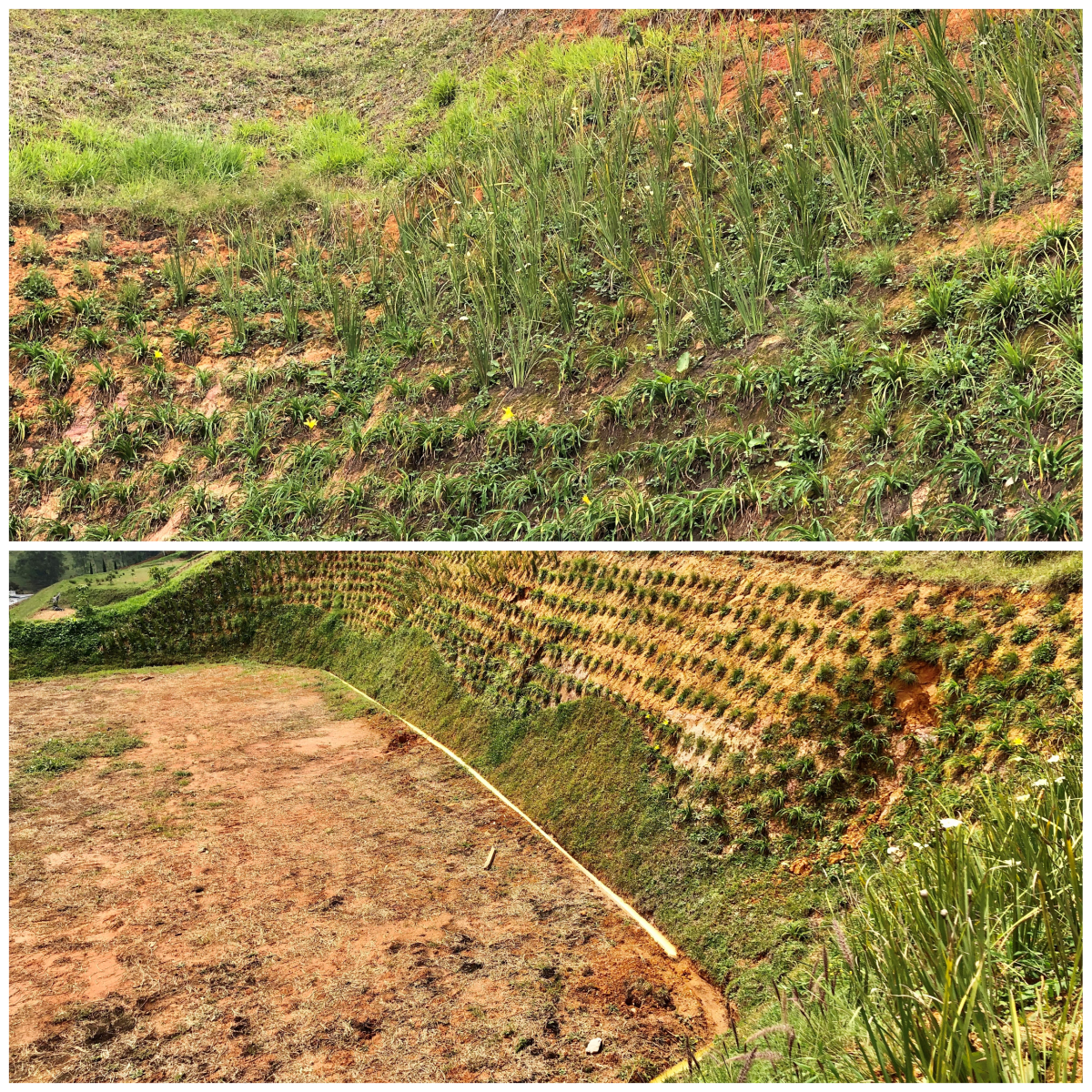
| Seedling planting on slope. |
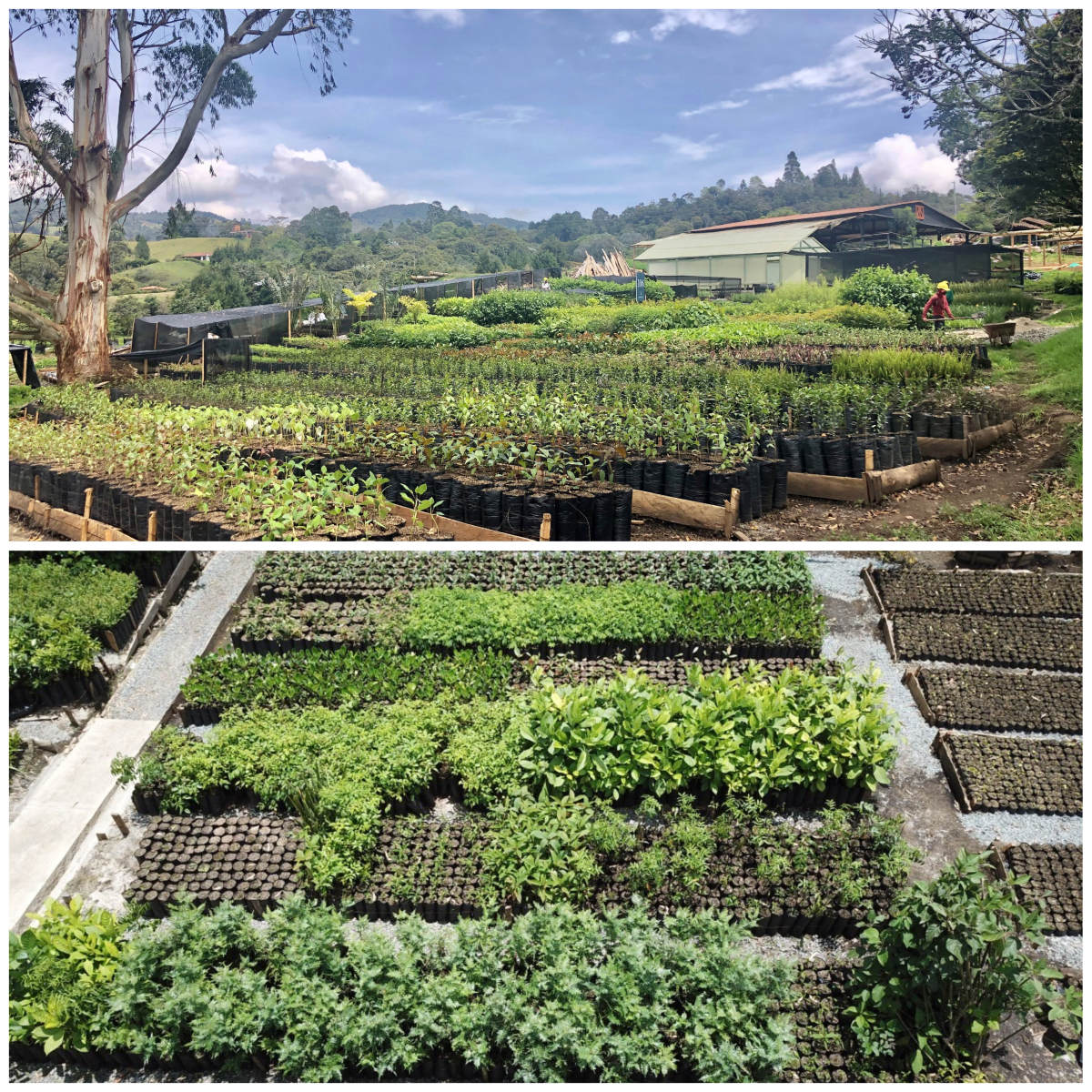
| Nursery established at Essenza. |
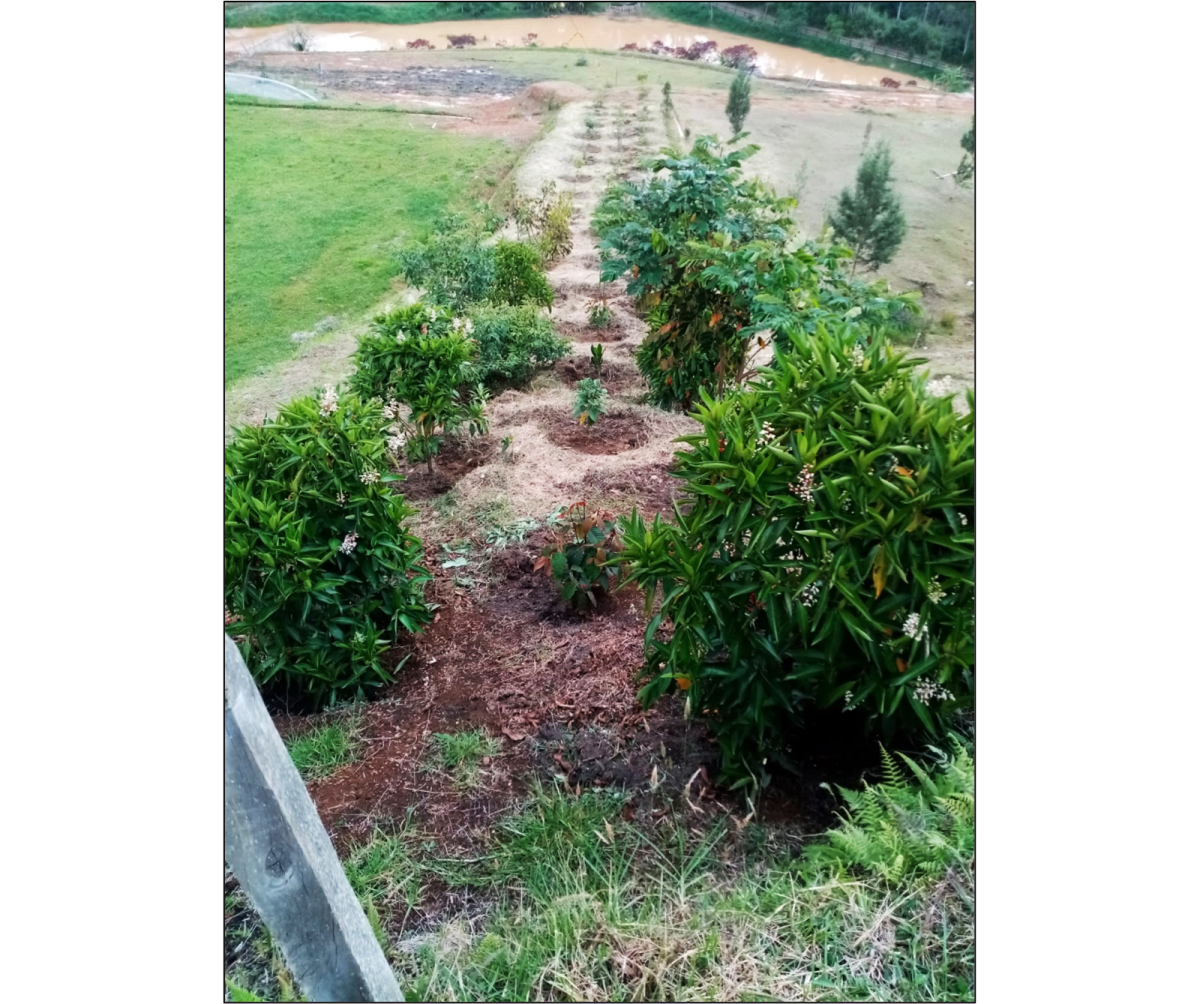
| Trees planted in the field with TerraCottem. |
You manage many plants and trees. Do you have a favourite one?
It's difficult to answer that question, because I love them all. Now that I have returned from the Amazon I like the "inchi" or orinoconut (Caryodendron orinocense), the “achapo” (Cedrilinga cateniformis) and the Amazon grape tree (Pourouma cecropiifolia). But if I have to choose one species from the tropical forest, it is the abarco or Colombian mahogany (Cariniana pyriformis) of which I am setting up a clonal seed orchard. Just last week I was in Yolombo, Antioquia and the cuttings are sprouting well. So I am happy, very happy because the abarco is like my beloved.
If you know someone who would also like to read this article, feel free to share:

FORESTPA S.A.S.
Carrera 38, No. 9 A 27 - Oficina 203
050021 Medellin (Antioquia)
Colombia
T: +57 4 3128795
E: comunicaiones@forestpa.com.co
W: www.forestpa.com.co
Would you like more information?
Contact usWould you like more information?
Contact usTerraCottem Intl. SL
Apartado de Correos 4511190 Benalup (Cádiz)Spain
